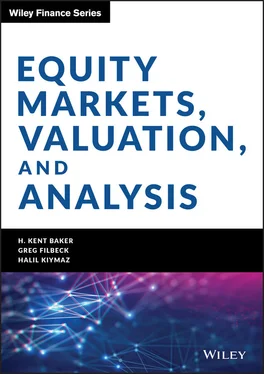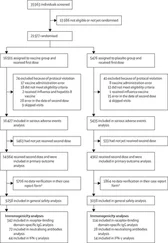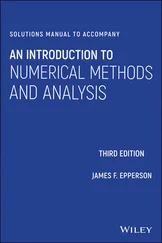Trading rules may limit affiliation between exchange members and member companies, or between members and their investment company securities, to mitigate the flow of information that might be material and nonpublic. Rules can also provide details with respect to the nature of communication between brokerages and the public by regulating how the flow of material nonpublic information is released. Further, trading rules sometimes limit brokerage ownership, the extent to which brokerages can influence or reward employees of others, or ban anti-intimidation and/or coordination activities (e.g., to stop people from reporting illegal activities). These restrictions can limit the flow of material nonpublic information.
Market Manipulation Rules
Market manipulation rules encompass price manipulation, volume manipulation, spoofing, and disclosure manipulation.
Price Manipulation RulesPrice manipulation can be carried out in many different ways and take various forms. One common way is when a client, broker, or colluding brokers enter purchase orders at successively higher prices to create the appearance of active interest in a security, which is also termed ramping/gouging . For example, in a pump-and-dump scheme, the manipulator generates a substantial increase in price and volume for a security, carries out a quick flip, and then sells the security often to retail customers at the higher prices. Clients may initiate intraday ramping/gouging, possibly independently or in collusion. Ramping/gouging requires trade execution. Ramping/gouging does not require a change in beneficial ownership or a violation of price/time priority. The manipulator benefits by misleading the stock's price and volume.
Another similar type of price manipulation is prearranged trading , which involves colluding parties simultaneously entering orders at an identical price and volume. Prearranged trading generally harms the marketplace because two specific parties benefit from the liquidity event without allowing other market participants to potentially participate in the transaction. Prearranged trades are initiated by brokers, require trade execution, involve a change in beneficial ownership, and violate price/time priority. Prearranged trades benefit all of the colluding brokers and may or may not give rise to misleading prices and volumes.
Price manipulation can be carried out through domination and control, and can take the form of corners or squeezes in cross-market activity. Corners and squeezes involve shortages in one market that can affect the price of a cross-market security. A corner involves securing control of the bid or demand side of both the derivative and the underlying asset, and the dominant position can be exploited to manipulate the price of either. A squeeze involves taking advantage of a shortage in an asset by controlling the demand side and exploiting market congestion during such shortages in a way that creates artificial prices. Another related form of manipulation includes mini-manipulations , whereby trading in the underlying security of an option is carried out in order to manipulate its price so that the options will become in-the-money (Merrick et al. 2005).
Domination and control may be initiated by a client or a company and may be carried out independently or in collusion with others. Domination/control requires a change in beneficial ownership but does not violate price/time priority. The client/company benefits through misleading price and volume. Price manipulation can also be carried out to take advantage of market setting, whereby brokers cross-order at the short-term high or low to affect the volume-weighted average price, or to set the price in one market for a cross in another market.
Clients or brokers may initiate market-setting manipulation, but it requires colluding brokers to carry out market setting. Market setting involves a broker crossing a client order to a price to execute the trade at the short-term high or low. Market setting is distinct from prearranged trades because the price level is manipulated before the matching of orders. Market setting can be detected by pattern activity and by observing an effect on the volume-weighted average price of the manipulated security.
Three different forms of price manipulation refer to a specific time period: (1) marking the open with regard to the market's opening, (2) marking the close with regard to the market's closing, and (3) trading to manipulate prices at the end of the month/quarter/year. The opening session can be subject to particular types of manipulation subject to the rules for entering bids and asks in the preopening session. Similarly, end-of-day trades may be geared toward manipulating the security's closing market price, and exchanges often specifically prohibit this type of act. Financial record-keeping among companies provides incentives to manipulate share prices around the end of the month/quarter/year that depends on the governance specific to the company.
Volume Manipulation RulesVolume manipulation can take two primary forms: churning and wash trading. Churning refers to the excessive trading of a stock to inflate its volume, thereby giving rise to the false impression that positive investor sentiment exists for the stock. Churning of client accounts may be carried out by traders and/or brokers to generate commission fees. Churning of principal positions gives the appearance of enhancing volume and may also be used to give the false appearance that a broker has a greater market share.
Churning of both client positions and principal positions is initiated by the broker and requires trade execution. A change in beneficial ownership occurs in churning of client positions and possibly in the case of churning of principal positions. Price/time priority is violated in the case of churning client positions. The broker benefits in the case of churning client positions, and possibly the underlying company also benefits in the case of churning of principal positions. Churning inflates volume and may or may not give rise to misleading prices.
Wash trading , another form of volume manipulation, means having the same client reference on both sides of a trade. Although no beneficial change occurs in ownership, wash trades have the effect of creating a misleading appearance of an active interest in a stock. With the appearance of a higher volume, wash trading allows brokers to take their clients out of a position at a potentially higher price.
Brokers initiate wash trades either in collusion or independently. Wash trades require client execution. No change in beneficial ownership occurs with wash trades, and wash trades do not violate price/time priority. Wash trades inflate volume to the benefit of the trading parties. Wash trades may also mislead price.
Spoofing Manipulation Rules Spoofing , also known as painting the tape , is a form of market manipulation that involves actions taken by market participants to give an improper or false impression of unusual activity or price movement in a security. Some exchange-trading rules have general statements of prohibition toward actions that give rise to a false appearance. Other exchanges more explicitly indicate ways of creating a false appearance, including entering fictitious orders, giving up priority, having switches, and layering of bid/asks.
Entering fictitious orders involves entering orders on one side of the market, then completing orders on the other side of the market and deleting the original order after the trade occurs.
Giving up priority refers to deleting orders on one side of the market as they approach priority and then entering the order again on the same side of the market. Giving up priority may be initiated by brokers or clients, and independently without collusion. Giving up priority does not result in trade execution or a change in beneficial ownership, but may violate price/time priority. Giving up priority benefits the broker and/or client through misleading the order book and therefore misleading both price and volume.
Читать дальше












